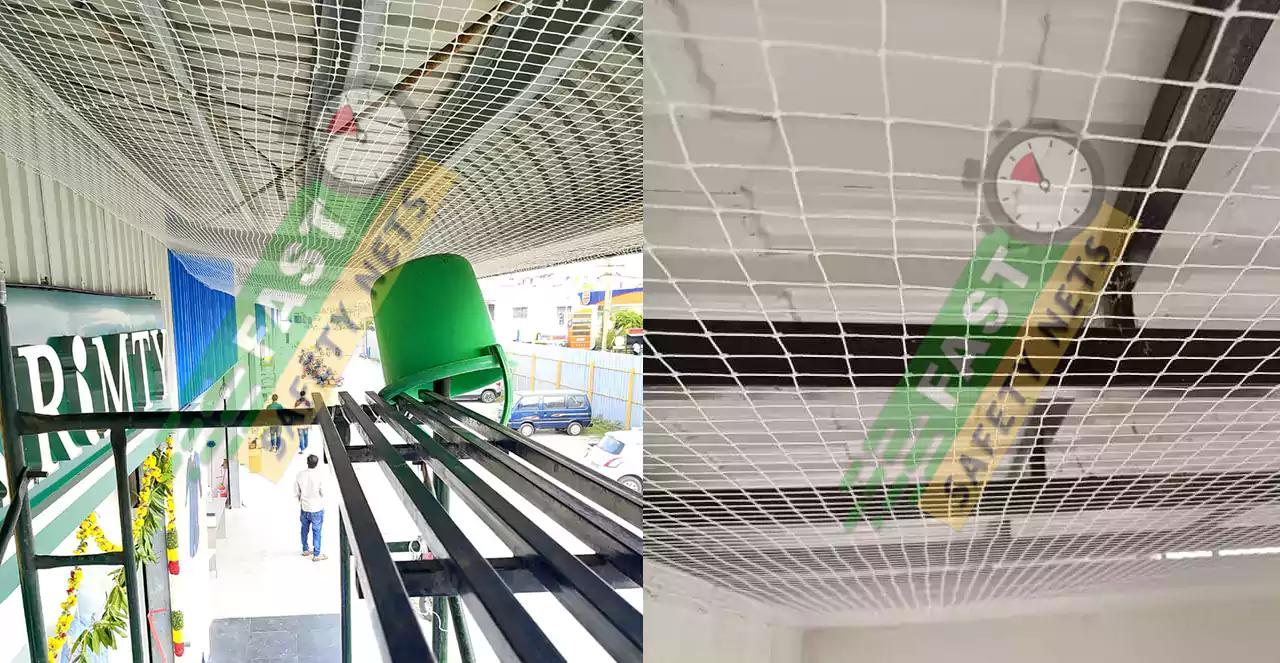
Industrial safety nets, including industrial bird netting, are specialized safety installations designed to enhance safety and security in industrial environments while also providing bird control solutions. These nets serve multiple purposes, ranging from protecting workers and equipment to preventing bird-related issues in industrial settings. These are robust and durable nets crafted from materials such as nylon or polypropylene. They are designed to create secure barriers in industrial facilities, warehouses, construction sites, and other work environments to mitigate risks and hazards.
Safety Enhancement: The primary purpose of industrial safety nets is to enhance safety in industrial settings by preventing falls, minimizing the risk of injury, and safeguarding workers, equipment, and materials. These nets act as a reliable fall protection measure, especially in areas where working at heights is common.
Fall Prevention: Industrial safety nets are installed strategically to catch and arrest falls, preventing workers from sustaining serious injuries or fatalities in the event of an accidental fall from elevated platforms, scaffolding, or work areas.
Debris Containment: In industrial settings where debris and materials may pose a hazard, industrial safety nets help contain and control debris, preventing them from falling onto lower levels or causing damage to property or equipment.
Bird Control: Industrial bird netting serves as an effective solution for bird control in industrial environments. By creating physical barriers, these nets deter birds from roosting, nesting, or accessing indoor or outdoor areas, thereby reducing the risk of contamination, damage, and health hazards associated with bird droppings and nesting materials.
When selecting industrial safety nets, including those used for industrial bird netting, it's essential to consider various factors such as material, size, and strength requirements to ensure optimal performance and effectiveness. Here's a guide to help you choose the right type of industrial safety nets:
Material:
Nylon Nets:
Nylon nets are lightweight, flexible, and resistant to UV rays and weather elements.
They are suitable for indoor and outdoor use and offer good visibility while providing effective fall protection and bird control.
Polyethylene (HDPE) Nets:
High-density polyethylene nets are durable, long-lasting, and resistant to abrasion and environmental degradation.
They offer excellent strength and stability, making them ideal for heavy-duty applications and harsh industrial environments.

Industrial safety nets should be used in various situations and environments where there is a risk of falls, debris hazards, or bird-related issues. Here are some scenarios when industrial safety nets are commonly used:
Warehouses and Distribution Centers:
Manufacturing Facilities:
Roofing and Maintenance Work:
Mining and Oil & Gas Sites:
Bird Control in Industrial Facilities:
Installing industrial safety nets requires careful planning and adherence to safety guidelines to ensure proper installation and optimal performance. Here's a step-by-step guide to installing industrial safety nets:
Expertise: We bring years of experience and expertise to every project, ensuring high-quality results.
Customized Solutions: Our team tailors solutions to meet your specific needs, providing personalized service and optimal outcomes.
Quality Materials: We use top-grade materials that are durable and reliable, ensuring long-lasting performance and protection.
Industrial safety nets are used in various industrial settings, including construction sites, warehouses, manufacturing facilities, mining sites, oil & gas installations, and distribution centers. They are installed in areas where there is a risk of falls, falling objects, or bird-related issues, such as elevated work platforms, mezzanine levels, storage racks, loading docks, and rooftops.
The lifespan of industrial safety nets depends on factors such as the quality of materials, exposure to environmental conditions, and maintenance practices. High-quality nets can last for several years with proper installation and periodic inspections for damage or wear. Regular maintenance and timely replacement of worn or damaged nets are essential for ensuring continued effectiveness and safety.
Copyright 2025 pigeonbalconynetting.com | All Right Reserved . Google Ads & SEO, Website Designed and Developed by isewis Technologies - www.isewis.com